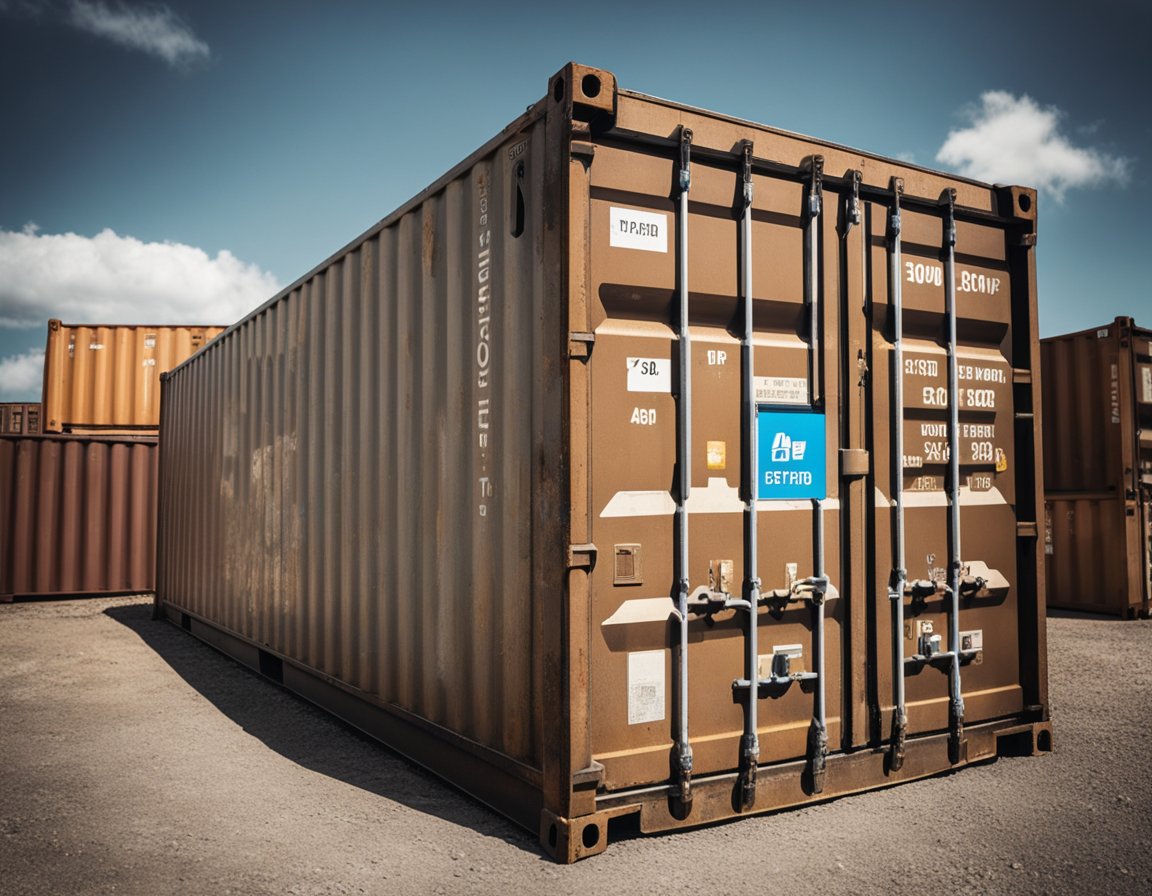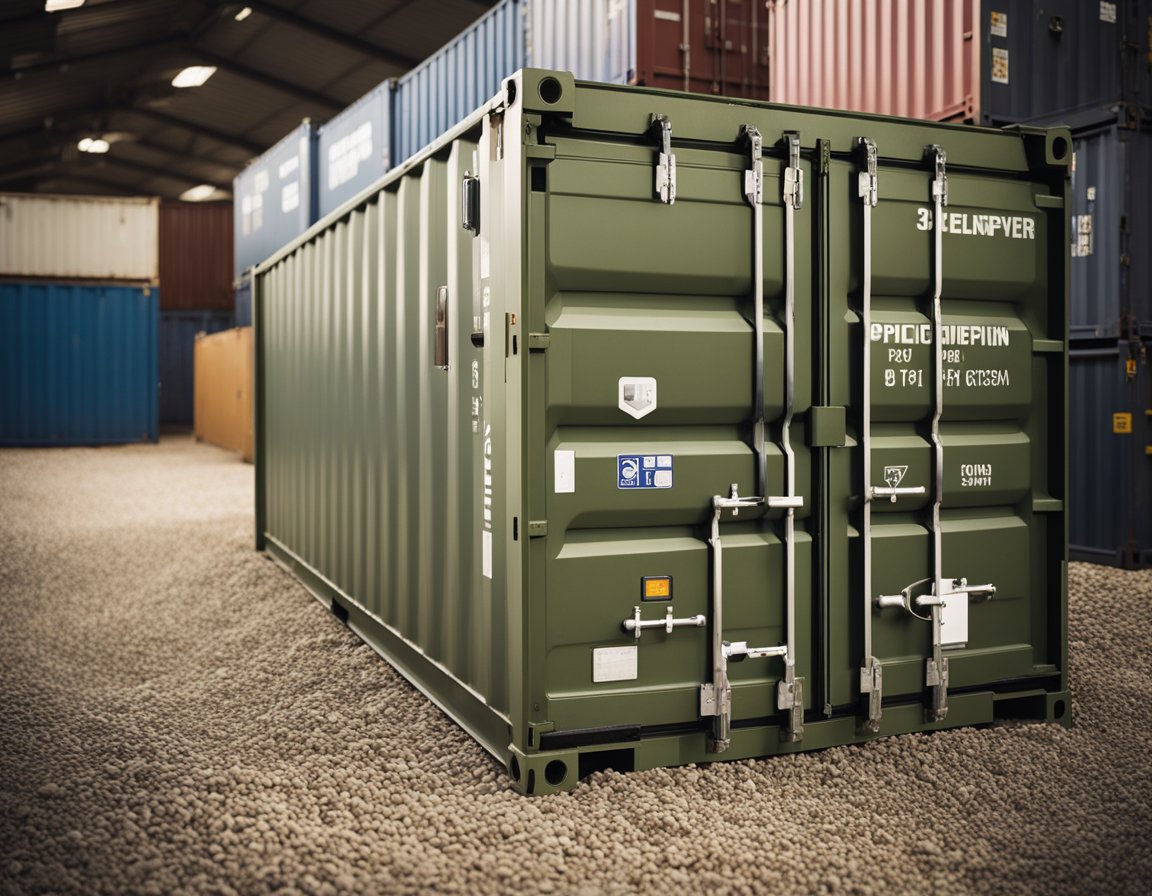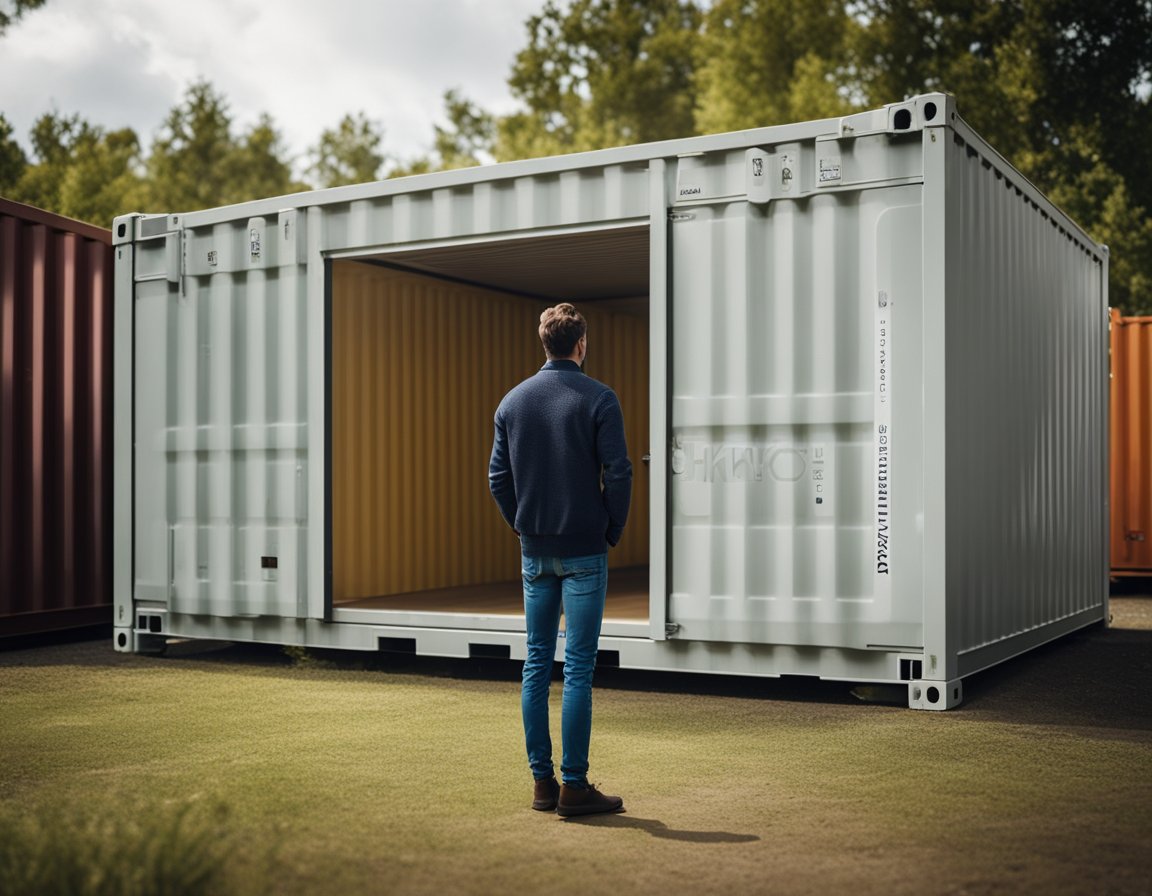Determining the cost of used shipping containers involves considering several factors, such as size, condition, and market demand. On average, prices can vary dramatically, with the range extending from a few thousand dollars to several thousands, depending on these variables. Typically, a standard used shipping container can begin at around $1,400 and go up to approximately $7,500, which includes the cost of the container itself along with additional expenses like shipping and taxes.

The most common sizes for used shipping containers are 20 feet and 40 feet, each catering to different storage needs and spatial constraints. For instance, a 20-foot used shipping container might cost between $2,000 and $3,000, while prices for used 40-foot containers start slightly higher, reflecting their additional capacity. These figures are not fixed, however, as the overall condition of the container—whether it’s wind and watertight, the age of the unit, and any modifications—can elevate the cost significantly.
Investors and potential buyers should also take into account the nuanced aspects of purchasing a used shipping container, which may include delivery fees, inspection requirements, and any customization work if the container will be repurposed for alternate uses. Recent market data indicates that the costs for a used shipping container have been influenced by global economic factors, and prices are subject to change based on supply chain dynamics. Thorough research can arm purchasers with the information needed to make a well-informed decision catered to their specific needs and budget.
Understanding Shipping Container Conditions
When purchasing used shipping containers, it is vital to assess their condition as it directly affects usability and price. Different classifications exist for containers based on their structural integrity and previous usage, which are crucial for buyers to understand.
Wind and Water Tight Containers
Wind and Water Tight (WWT) containers ensure that the contents are protected from the elements. Typically, these containers have been retired from shipping service but are still suitable for storage purposes. They are not necessarily certified for cargo transport, but they excel in keeping goods dry and secure on land.
Cargo Worthy Containers
Cargo Worthy containers are certified by maritime authorities to be structurally sound for shipping goods across oceans. They may have some cosmetic damage but are devoid of holes and structural weaknesses. These containers are usually inspected and given a CSC (Container Safety Convention) plate, which is a testament to their condition and readiness for cargo transport.
One Trip Containers
One Trip containers are the newest on the secondary market, having been used for a single shipping cycle. They are almost new and have minimal wear and tear. Made from Corten steel, these containers possess high resistance to the harsh marine environment, making them a durable choice for both shipping and storage needs.
Refrigerated Containers
Refrigerated containers, also known as reefers, are specialized for transporting perishable goods that need to be kept at a constant temperature. They are insulated and equipped with an integrated refrigeration unit. These containers undergo rigorous checks to ensure the refrigeration systems are fully operational and the insulation is intact.
High-Cube Containers
High-Cube containers are similar to the standard shipping container but provide an additional foot in height, making them 9’6″ tall. This extra space is beneficial for storing or transporting taller goods. Their condition is judged similarly to other container types, focusing on structural integrity and the ability to safeguard contents.
Dry Storage Containers
Dry Storage containers are the most common type used for transporting a wide range of cargo. They come in a variety of sizes, with 20-foot and 40-foot lengths being standard. Evaluating these containers involves checking for weatherproofing, door seals, and the overall condition of the floors, walls, and roofs.
Size and Type Considerations
When considering used shipping containers, the primary focus should be on the size and type relative to the intended use. Standard containers come in distinct sizes, mainly 20ft and 40ft, with variations such as high cube for additional height and specialized types like flat racks for oversized cargo.
20ft Standard Containers
The 20ft standard container is a versatile size for various storage and transport needs. Measuring approximately 20 feet in length, 8 feet in width, and 8 feet 6 inches in height, these containers are commonly used for both shipping and as a base for modifications due to their manageable size. They can be found in both dry container and reefer (refrigerated) configurations.
40ft Standard Containers
A 40ft standard container doubles the length of the 20ft, offering more capacity for goods. It holds the same width and height, at 8 feet and 8 feet 6 inches respectively. These containers are suitable for most goods transported by sea and land and are a popular choice for larger storage solutions. The cost for a used 40ft container generally ranges between 2,600 and $3,300 based on condition and age.
High Cube Container Variants
The high cube container presents an additional foot in height compared to the standard, reaching up to 9 feet 6 inches tall. Both 20ft and 40ft containers have high cube variants, making these ideal for taller cargo or extra volume without extending the footprint. You can find a used 40-foot high cube container could cost around $5,000, which can be a substantial consideration depending on budget constraints.
Flat Rack and Specialized Types
For cargo that does not conform well to standard container sizes, flat rack and other specialized types are viable options. Flat racks are especially designed for heavyweight or oversized loads due to their open sides and collapsible ends, lending flexibility to the transportation of awkwardly sized goods. Specialized containers might include open-top containers, tank containers for liquids, and insulated or thermal containers, among others. These types vary significantly in price and are subject to market availability.
Pricing and Costs
When it comes to purchasing used shipping containers, price can vary significantly based on a multitude of factors. Understanding these can help in obtaining the best value for money.
Cost Factors
Location: The closer a buyer is to shipping container depots or ports, the lower the transport costs, impacting the overall cost.
Size and Type: Standard sizes typically cost less than customized or specialized containers like high cubes or refrigerated units.
Condition: Containers are categorized into one-trip, cargo-worthy, wind and water tight, and as-is—each with different pricing implications.
Age: Older containers may be less expensive, but condition can vary and may affect the usability for certain applications.
Market Demand: Fluctuations in supply and demand can significantly affect container costs.
Comparing Prices
It’s crucial for potential buyers to conduct price comparisons. Websites like Container Addict or Eveon Containers list various containers and their prices, helping buyers find the most competitive offers.
Price Range for Used Containers
According to online industry sources, used shipping container costs can generally range from $2,100 to $7,500. Here are some specific examples:
- 20ft containers: Start around $2,100 and can go up to $3,000.
- 40ft containers: Typically range from around $1,749, as listed on Eveon Containers, to $4,500 for wind and water tight versions.
- Specialized containers such as high cubes or refrigerated units can be on the higher end of the price spectrum and may exceed the average range, especially if they include modifications.
Prices will always reflect current market conditions and are subject to change, so it is advisable to check the latest quotes.
Purchase and Acquisition
https://www.youtube.com/watch?v=ah0okVQ7Wcw&embed=true
When considering a used shipping container, potential buyers are presented with options to either purchase or rent, with various sources offering different cost advantages. Strategic knowledge of the market can yield significant savings through discounts and special offers.
Buying vs. Renting
Buying a shipping container outright can be a cost-effective solution for those needing long-term storage or a permanent structure. Prices for used containers typically range from approximately $1,400 to $7,500, depending on size, condition, and location. In contrast, renting a container offers flexibility for short-term use without the upfront investment, but may result in higher overall costs for prolonged periods.
Where to Buy Used Containers
A variety of marketplaces facilitate the sale of used shipping containers. Notable platforms include:
- Online Marketplaces: Websites like eBay and Craigslist list various shipping containers for sale, providing a broad range of options from private sellers and dealers.
- Specialized Dealers: Companies specialize in shipping containers and may offer additional services such as delivery and customization.
It’s essential to verify the seller’s credibility and inspect the container’s condition before purchasing.
RELATED
- How much does a Shipping Container Cost in 2022 ?
- How Much Are Shipping Container Homes?
- Shipping Container Home Cost: An In-Depth Analysis for Budget Planning
Insights into Discounts and Offers
Potential buyers should be aware that discounts and offers can significantly lower the acquisition cost. For example, buying multiple containers at once often results in a lower price per unit. It’s also possible to find special offers through:
- Bulk Purchases: Negotiating with sellers for a reduced price when buying in large quantities.
- Seasonal Sales: Keeping an eye out for dealers who might offer discounts during certain times of the year.
Researching and comparing prices is crucial for those seeking the best deals on used shipping containers.
Location-Specific Information

The cost and availability of used shipping containers can vary significantly depending on the location. In urban centers and coastal areas where shipping activity is high, there are often more containers available, typically resulting in competitive pricing. In contrast, inland locations may have fewer containers on hand, potentially driving up costs due to transportation.
Finding Containers in Los Angeles
Los Angeles, with its bustling port, has a robust market for used shipping containers. They can typically be found ranging from $2,100 to $7,500, which often includes shipping and taxes. Due to the high turnover at the Port of Los Angeles, both standard and non-standard sizes are usually in stock.
Options in Houston
Houston’s proximity to several commercial shipping channels makes it another hotspot for container sales. Prices for used containers in Houston might be slightly less than those in Los Angeles, reflecting regional differences in supply and demand.
New York Availability
In New York, especially around the Port of Newark, used shipping containers are readily available. The costs, however, can be on the higher side due to the area’s dense population and high demand, with prices ranging broadly from $1,500 to $6,000 for various sizes and conditions.
Significant Depots Across America
Major cities such as Dallas, Memphis, Denver, Charleston, Savannah, and Kansas City host significant depots where a wide array of used shipping containers can be found. Each location has varying stock levels and pricing, often determined by local supply chains and transportation costs.
Container Availability in Canada
In Canada, cities like Montreal see a steady supply of used shipping containers. While they might be more expensive than some US locations due to currency exchange rates and shipping expenses, Canadian buyers have a considerable market to tap into, from domestic sources in major cities to containers imported from neighboring American depots.
Container Modifications and Customizations
Upgrading a used shipping container for specific needs involves a range of modifications and customizations, from installing access points to enhancing climate control and space utilization.
Adding Windows and Doors
Shipping containers, originally designed for cargo transport, often require additional points of access. Modifications can include the installation of 3′ wide roll-up doors for ease of entry or secure loading, and the addition of windows to usher in natural light, improving inside visibility for various applications. Standard windows may start at a certain price point, with customizations available for size and features such as tempered glass or security bars.
Customizations for Storage and Space
Maximizing storage space and optimizing the interior for different uses is a primary concern. Containers can be tailored to serve as mobile offices, workshops, or retail spaces with the addition of partitions, shelving, and built-in furniture. Detailed custom work, including specific cutouts for equipment or additional supports for heavy items, ensures that every inch of the container is functional.
Custom HVAC and Insulation
Maintaining a comfortable temperature and proper ventilation inside a shipping container is crucial, especially when modified for human occupancy. Installing a Window A/C unit or a full HVAC system helps regulate the interior climate. Insulation is just as important to conserve energy and protect against external temperature fluctuations. Regular maintenance of these systems guarantees their longevity and efficiency. These customizations are not only about comfort but also about preserving the condition of items stored or activities carried out within the container.
Transportation and Setup
When purchasing a used shipping container, buyers must consider the logistics of delivery and the requirements for the placement of the container. These factors can significantly impact the total investment required for acquiring the container.
Delivery and Transportation Costs
Transportation costs for a used shipping container are generally calculated per mile and vary according to the size of the container and the distance it needs to travel. Based on the size of the container, one can expect to pay between $1-4 per mile. Crucial factors that affect transportation costs include the container’s dimensions, weight, and the type of transport required, such as flatbed trucks for overland delivery. Furthermore, acquiring the appropriate permits can also influence the total cost, as some regions may require special permissions for oversize or overweight loads.
Site Preparation and Installation
Prior to delivery, it is imperative to ensure that the site preparation has been completed to accommodate the shipping container. This preparation involves the construction of a stable foundation, which may consist of concrete slabs, gravel beds, or wooden platforms designed to support the weight of the container. Additionally, accessibility to the site must be considered, as obstacles like gates, trees, or tight turns can affect the ability to unload and place the container. Clear guidelines should be communicated to transport companies to ensure a safe and efficient installation. Costs associated with site preparation will vary depending on the complexity of work and local labor rates.
Maintenance and Upkeep

When considering the purchase of a used shipping container, understanding the maintenance and upkeep required is essential for preserving its structural integrity and ensuring it remains leakproof. Regular attention to maintenance can significantly extend the lifespan and utility of the container.
Key Maintenance Tasks:
- Inspection: Thoroughly inspect for rust, dents, and any other signs of wear.
- Cleaning: Keep the container clean from debris and rust to prevent corrosion.
- Painting: Apply protective paint to the exterior to guard against the elements.
Cost Considerations:
| Container Age | Expected Maintenance Costs |
|---|---|
| Newer | Lower due to fewer repairs |
| Older | Higher due to more upkeep |
Maintaining the structural integrity of a used shipping container is crucial, as damage can compromise its functionality. Regular checks are fundamental for detecting issues early and addressing them promptly.
To ensure the container is leakproof, one must seal any gaps and replace damaged weather stripping around doors and windows. This is particularly important in containers that are exposed to harsh weather conditions or those used in sensitive storage applications.
In summary, a diligent maintenance routine will safeguard a used shipping container from common issues, thereby maximizing its value and serviceability. While older containers may require more upkeep, these costs can be mitigated through proactive care and regular monitoring.
Customer Considerations

When purchasing a used shipping container, customers should prioritize their long-term satisfaction by carefully evaluating the customer service, analyzing reviews and testimonials, and assessing the lifetime value of the product.
Evaluating Customer Service
Good customer service is essential when buying a used shipping container. Customers must inquire about the provider’s responsiveness to emails and calls, their efficiency in handling inquiries, and their ability to resolve potential issues. Reliable customer service implies having knowledgeable staff who are available to guide customers through the buying process, ensuring a hassle-free experience.
Analyzing Customer Reviews and Testimonials
Reading through customer reviews and testimonials can provide insights into the quality of shipping containers and the level of customer satisfaction. Reviews often reflect the real-world experiences of past customers, highlighting both the strengths and potential pitfalls of the seller’s service. It is advisable to look beyond the star rating and read individual accounts to get a detailed understanding of what to expect.
Assessing Lifetime Value and Satisfaction
Determining the lifetime value of a used shipping container involves more than just its upfront cost. Consider the container’s condition, potential for customization, and overall suitability for intended use. Quality shipping containers that meet the customer’s specific needs typically lead to higher levels of customer satisfaction and long-term value, even if the initial investment is higher. It is beneficial to weigh these factors to ensure that the purchase aligns with both short-term budget and long-term usefulness.
Market Insights and Trends
Amidst evolving markets, used shipping containers continue to present a viable cost-efficient alternative to new units. Demand fluctuates based on global trade patterns while supply is influenced by the decommissioning of older containers and the turnover of shipping fleets.
Demand and Supply Analysis
Used shipping containers have seen consistent demand in various sectors, from traditional freight to innovative construction. With the cost to build a shipping container home often being lower than traditional methods, it has spurred interest in the residential market. Meanwhile, on the supply side, the number of containers available is affected by international trade volumes and the rate at which shipping lines update their fleets.
The price trends for storage containers and shipping container accessories also reflect broader economic indicators such as manufacturing output and consumer market trends. It’s important to note that prices and availability can vary greatly depending on the region and the condition of the containers.
Future of Container Housing
The sector of container housing is gaining momentum as an affordable and sustainable housing solution. Current trends suggest a growing acceptance of container homes, possibly impacting the dynamics of the housing market and construction industry.
The factors affecting this shift include the:
- Adaptability and modular nature of containers
- Relative cost savings compared to traditional building methods
As the market matures, the demand for both new and used shipping containers for housing is expected to rise. This uptick in demand may influence the overall container market, potentially altering the cost dynamics as supply adjusts to meet new uses.
Legal and Regulatory Compliance
https://www.youtube.com/watch?v=jsCArj-z22E&embed=true
When considering the purchase of a used shipping container, it is imperative to ensure that the container meets all legal and regulatory requirements. This includes acquiring the appropriate permits as well as adhering to industry and manufacturer standards to guarantee compliance and safety.
Understanding Permits and Regulations
For individuals or businesses looking to procure a used shipping container, it’s crucial to be familiar with local permits and zoning regulations. They dictate where and how shipping containers can be used. Permits are often required to install a shipping container, especially when it’s intended for use as a building or storage facility. These permits ensure that the use of the container complies with:
- Local building codes
- Zoning laws
- Safety regulations
In some cases, containers may also need to meet specific standards pertaining to the International Fire Code, especially if they are repurposed for stationary storage.
Manufacturer and Industry Standards
Manufacturers of shipping containers must follow stringent industry standards, which are in place to ensure containers are safe for transport and other uses. These standards include, but are not limited to, the following aspects:
- Structural Integrity: Containers should be structurally sound, especially if they are being repurposed.
- ISO Compliance: Used containers must comply with the International Organization for Standardization (ISO) regulations to be deemed fit for shipping or alternative uses.
Manufacturer guidelines also play a vital role in maintaining the serviceability of shipping containers. These guidelines include instructions for the repair, inspection, and maintenance of containers to prolong their service life and ensure safety in their utility.
